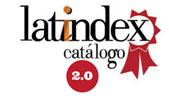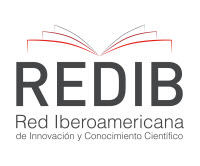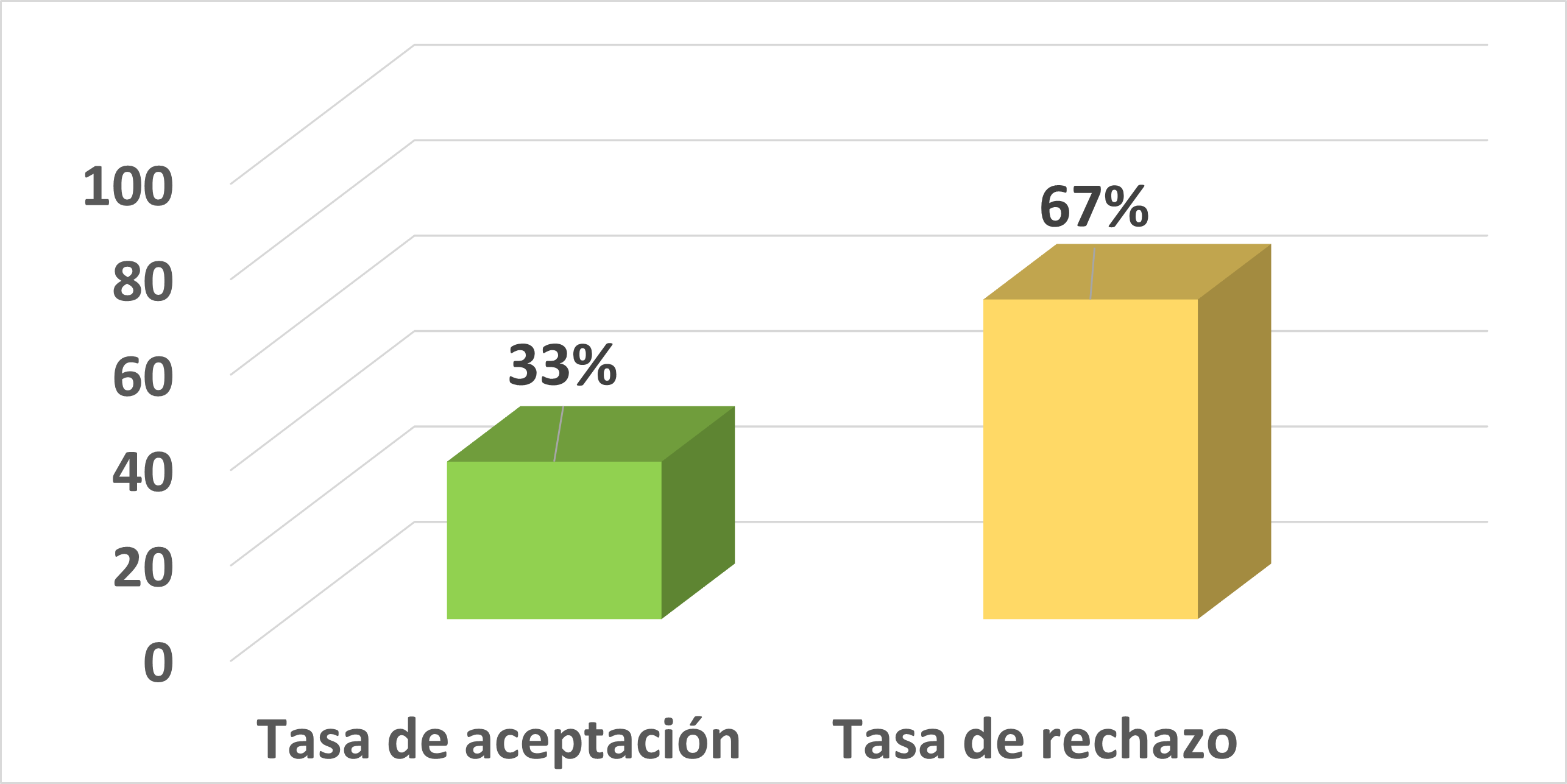Submissions
Submission Preparation Checklist
As part of the submission process, authors are required to check off their submission's compliance with all of the following items, and submissions may be returned to authors that do not adhere to these guidelines.Author Guidelines
INSTRUCTIONS FOR AUTHORS
Editorial policy and submission of manuscripts
Manuscripts will be sent via the Open Journal Systems platform of CEDAMAZ magazine. For concerns or questions, contact our Responsible Editor, Dr. Marina Mazón, by email at marina.mazon@unl.edu.ec.
The official language for the publication of the journal is Spanish or English. Once the manuscript is received, an electronic acknowledgment of receipt will be made by the editor in charge, sending the author (s) for correspondence the edition code and requesting the Authorship Declaration and Originality document. The editing code must be preserved by the authors. The Authors' Declaration and Originality must be filled out by the authors and sent to the editor in charge of the Journal.
After we receipt of the Declaration of Authorship and Originality, the review process will begin. From this moment the manuscripts are considered confidential documents and the anonymity of the authors will be preserved. The review will be based on the double-blind "peer review" system, which consists of the evaluation of the manuscript by two highly qualified national or international referees. Once the arbitration process is finished, the authors will be informed of the result of the evaluation of the manuscript, which consists of accepted, accepted with modifications, rejected. For articles accepted with modifications, only 3 re-submissions will be accepted by the editorial. If the comments and recommendations made by the reviewers are not corrected, the manuscript will be rejected. To facilitate these processes, all manuscripts must be sent via Open Journal Systems platform.
Suggestions for peer reviewers
To speed up the scientific peer review processes, it is recommended that during the submission process the co-authors suggest three potential reviewers with adequate experience to evaluate the manuscript. The Section Editor will decide whether to select the people proposed for reviewing the manuscript or other reviewer. When co-authors recommend all three people for the revision, they will need to specify detailed information such as full name, affiliation, and email. The proposed reviewer (s) must not be current collaborators of the co-authors, nor must they belong to the same institution where the co-authors work or have published an article or technical report with any of the co-authors of the manuscript in the last five years.
Suggestions from peer reviewers should be described in the section “Comments for the editor” when executing the manuscript submission process within the “Open Journal Systems”.
TYPES OF CONTRIBUTIONS
CEDAMAZ Journal receives manuscripts in Spanish and English that report original and quality research developed by scientists from any institution and country. Four types of contributions are published:
1. Research articles: They present formal research results that have a scientific method and procedure and report substantial conclusions for the understanding of a problem. They are manuscripts that should not exceed 20 pages.
2. Review articles: documents that synthesize conceptual advances in any of the areas of knowledge and are intended to provide general views of the existing knowledge in the areas discussed. Reviews should not only be geared towards describing the work of others but should also include discussions of new trends or new syntheses. These articles may not exceed 10 pages.
3. Clinical Cases: They present medical cases duly supported and analyzed.
SUBMISSION GUIDE
RESEARCH ARTICLES
Original research results that have scientific methods and procedures, preferably generated from the results of research projects, will be accepted. Manuscripts must be written in Microsoft Word, Latex, or Overleaf, 12-point Time New Roman font and 1.5 line spacing and justified paragraphs. The configuration of the pages will be Inen A4 (21 x 29.7). Manuscripts with a maximum of 20 pages including tables, figures and references will be accepted. Citations and references must follow the international standards APA seventh edition. The manuscript must be submitted in a single column for review.
IT IS MANDATORY TO USE ANY OF THE FOLLOWING TEMPLATES FOR YOUR SUBMISSION
Template word - research articles CEDAMAZ_V2
Template latex - research article CEDAMAZ_V1
Template Overleaf - research article CEDAMAZ_V1
SECTIONS
(1) Title, (2) Name of the authors, (3) Affiliation of the authors, (4) Summary and Abstract, (5) Keywords and Key words, (6) Introduction, (7) Materials and Methods, ( 8) Results, (9) Discussion, (10) Conclusions, (11) Acknowledgments, (12) Authors Contributions, (13) and References.
Title:
Identify the research that is presented accurately, briefly, clearly and reflect the content of the article in a maximum of 15 words. It must be written in Spanish and English.
Authors name:
The names and surnames of the authors will be written, excluding academic or scientific degrees. In some cases, the second last name can be joined to the first by a hyphen. If there are two or more authors, they must be separated by a comma and the name of the second or last author, respectively, must be separated by the letter “and”.
Example:
Zhofre Aguirre-Mendoza, Reinaldo Linares-Palomino, and Kvist Lars
Note: It is necessary to maintain consistency in the use of names and surnames, your presentation must be the same in all your publications, whether you use full names or surnames or only initials.
Author Affiliation:
In works with several authors and where several affiliations are involved, each affiliation, city, and country should be mentioned by a correlative superscript at the end of each author's name. The corresponding author should be marked with an asterisk (*) indicated after their respective superscript. The use of the full name of the institution within the affiliation is mandatory and each affiliation must include the city and country of the institution.
Example:
Zhofre Aguirre-Mendoza1*, Reynaldo Linares-Palomino2 and Kvist Lars3
1 Herbarium Loja, National University of Loja, Ciudadela Guillermo Falconi. Loja, ECUADOR. herbario@unl.edu.ec
2 Department of Systematic Botany, University of Goettingen, UntereKarspuele 2, 37073, Goetingen, GERMANY. pseudobombax@yahoo.co.uk
3 Department of Botany, Aarhus University, Denmark
* Corresponding author.
Note: It is mandatory that each of the authors register within the ORCID (Open Researcher and Contributor ID). ORCID is a global nonprofit organization that enables scientists engaged in research, scholarship, and innovation to be uniquely identified and connected to their contributions across disciplines, borders, and time.
More information and registration here: ORCID
Anbstract:
It is written in a single block with a maximum of 250 words. The ideas and scientific information will be communicated in a clear, concise and brief way. The following aspects must be included: (a) a brief introduction to the subject including the problem statement and objectives, (b) the methodology used, (c) the most important results, and (d) the main conclusions. At the end of the abstract, keywords will be written (no more than five).
Keywords:
At the end of the abstract, followed by a space, the keywords will be included. Keywords should not exceed 5 words. Use keywords that are contained not in the title. Keywords must be arranged alphabetically.
Introduction:
This section presents the background, the importance, and the relationship of the research with similar studies. Also include the scope and purpose of the research, limitations, and a brief review of the literature of the study. The introduction should conclude in a general way with the objectives of the research. It will be written in such a way that it motivates the reader on the research question. It should not exceed 2 pages.
Materials and methods:
It is necessary to make a precise and complete description of the materials, methodologies, and techniques used in the research, allowing the interpretation of the results of the research, and judging its validity. This section describes logically and sequentially where and how the activities, steps, phases, or stages were carried out to achieve each of the proposed objectives. For quantitative research, it is necessary to consider the experimental designs and the statistical procedures, as well as the variables to be analyzed, such as treatments, repetitions, factors, and measurements. For qualitative research, it is necessary to specify the inductive process. In case the techniques or procedures have been described in previous works, the corresponding bibliographical references should be noted. If, on the other hand, they have undergone modifications, these new changes must be described. The International System of Units will be used for the manuscript.
Results:
The results will be presented through text, tables, and figures; considering that each table and figure included in the manuscript must be adequately described and cited in the text. The presentation must be done in a logical order, conveniently grouping the various results in correspondence with the objectives and the materials and methods used. It is necessary to present the negative and positive facts if they are relevant and have been analyzed correctly. Text is the efficient way to present little data, tables are ideal for presenting precise and repetitive data; instead, figures are suitable for presenting data that exhibits important trends or patterns. It is important to avoid presenting the same information in tables, figures, and text. Instead of stating that the data is in Table 1 and expecting the reader to study it and deduce the results, it is preferable to summarize the most important conclusions in words. When the work requires statistical analysis, the necessary data for an understanding of the article will be included in the text. In the case of experiments, avoid including tables and figures with data from all repetitions, instead, only present averages of repetitions and significant data.
Discussion:
In this section, the authors analyze, explain, and interpret the results, describe the facts found in the research, compare them with the data obtained by other researchers documented in the literature and reach conclusions in accordance with the hypothesis that motivated the investigation. In this section, when referring to the facts found by other authors (affirming or refuting them), the author(s) must be quoted (author year), this also applies to the introduction and materials and methods.
Conclusions:
The author must indicate in a logical, clear, and concise way the findings, the new knowledge discovered, the innovation, and the contribution to science. The conclusions are based only on facts and will be presented according to the results. Conclusions must be written not as recommendations.
Acknowledgment:
This section recognizes the help of people and institutions that contributed significantly to the development of the research. The names of the authors of the article are not written in this section.
Author contributions
For articles with multiple authors, a short paragraph specifying their individual contributions must be provided. The following statements should be used: “Conceptualization, XX and ZZ; methodology, XX; formal analysis, ZZ; research, YY; resources, ZZ; data curation, YY; writing — preparation of the original draft, XX; writing — proofreading and editing, XX and ZZ; display, XX; supervision, XX; project management, XX; financing acquisition, XX and YY. All authors have read and accepted the published version of the manuscript". It is important that authorship should be limited to only those researchers or those researchers who contributed substantially to the scientific article and research.
Example of author contributions considering the authors Zhofre Aguirre-Mendoza, Reynaldo Linares-Palomino, and Kvist Lars. Only initials should be used to acknowledge the contribution of each of the authors.
AUTHOR CONTRIBUTIONS: conceptualization: ZAM and KL; methodology: ZAM; formal analysis: ZAM.; research: ZAM; resources: ZAM; data curation: RLP and KL; writing — preparation of the original draft: ZAM; writing — proofreading and editing: ZAM, RLP, KL; Display: ZAM; supervision: ZAM and KL; project management: ZAM; acquisition of research funding: ZAM and RLP. All authors have read and accepted the published version of the manuscript.
Taxonomy for author contribution
Conceptualization: corresponds to the ideas; formulation or evolution of general research goals and objectives.
Data curation: are the activities of data management or production, data cleaning, generation of research data including software code.
Formal analysis: is the application of statistical, mathematical, computational or other formal techniques to analyze or synthesize the data within the investigation
Acquisition of funds: the acquisition of financial support for the research project that gave rise to this publication is considered.
Research: it is the execution of a research process, this considers the execution of experiments or the collection of field or secondary data.
Methodology: it is related to the development or design of methodology, the creation of models, etc.
Project administration: it is the responsibility of directing and coordinating the planning and execution of the research activities that allowed this publication.
Software: is the generation or contributions in programming, software development; computer program design; implementation of computer code and supporting algorithms; testing of existing code components; etc.
Supervision: relates to the responsibility of supervision and leadership for the planning and execution of research activities, including internal or external mentoring of the team that worked on this publication.
Visualization: visualization is the preparation, creation, presentation of the published work and presentation of data in a visual way.
Writing - original draft refers to the initial draft. Considered here is the preparation, creation, and/or presentation of the published work in its initial format.
Writing - revision and edition: it is the critical revision, comments, or edition of the document before being sent to the magazine.
Funding:
All sources of funding that contribute to your research should be mentioned. Financing from your own or institutional must be considered or any other source that has contributed to this research.
References:
It is the list of publications to which reference is made through citations in the text of the manuscript. The list of references consulted sources is ordered alphabetically by authors and follows the international standards APA seventh edition. All must have been mentioned in the text. Use only important and published works. Unpublished research works in press, abstracts, theses, and other material should not be included in the reference section. Each reference must be checked before submitting the manuscript for peer review. To learn more about the APA standards the seventh edition follow the following link:
TABLE FORMAT
Tables must follow APA standards and must be numbered consecutively (Table 1). Table must have a title or description at the top. All tables must be mentioned in the main text. If there are explanatory notes, they should be placed at the end of the table and the corresponding symbols should be used. If the table is too long and goes to the next page, the headers must be repeated.
Example
Table 1: Results of blood chemistry tests in a patient diagnosed with hepatic hemangioma.
FORMAT OF FIGURES
All figures (photos, maps, illustrations, graphs, etc.) must be numbered consecutively (Fig. 1) and must contain a description. The use of black and white or color graphics is allowed. The graphs must include the title of the axes (with a capital initial) centered and the units of the variable. Figures must be in jpg or tiff format with a minimum resolution of 300 dpi. In the case of photographs, these must be presented in color.
Example:
Fig. 1: Gross deforestation for the Loja province. Period 2016 - 2018
SCIENTIFIC NAMES
All scientific names should be written in italics.
UNITS
The Standards of the International Measurement System (SI) must be used. All documents must express their values with units of the decimal system, avoiding the use of inches, yards, etc.
REFERENCE MANAGEMENT SOFTWARE
For the production processes of the submitted article, the use of reference Management Software such as Mendeley, Zotero or Endnote is mandatory.
Copyright Notice
Those authors who have publications with this journal, accept the following terms:
- After the scientific article is accepted for publication, the author agrees to transfer the rights of the first publication to the CEDAMAZ Journal, but the authors retain the copyright. The total or partial reproduction of the published texts is allowed as long as it is not for profit. When the total or partial reproduction of scientific articles accepted and published in the CEDAMAZ Journal is carried out, the complete source and the electronic address of the publication must be cited.
- Scientific articles accepted and published in the CEDAMAZ journal may be deposited by the authors in their entirety in any repository without commercial purposes.
- Authors should not distribute accepted scientific articles that have not yet been officially published by CEDAMAZ. Failure to comply with this rule will result in the rejection of the scientific article.
- The publication of your work will be simultaneously subject to the Attribution-NonCommercial-NoDerivatives 4.0 International (CC BY-NC-ND 4.0)
Privacy Statement
The names and email addresses registered in this journal will be used exclusively for the purposes stated in it and will not be provided to third parties or used for other purposes.








